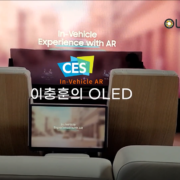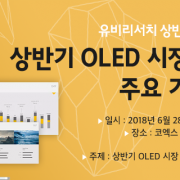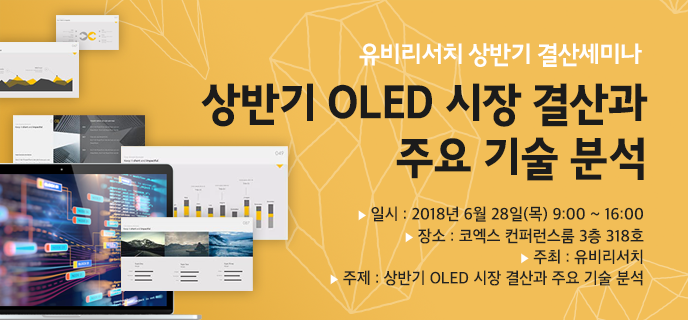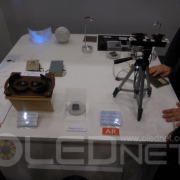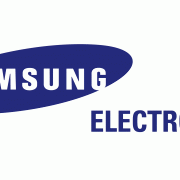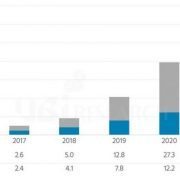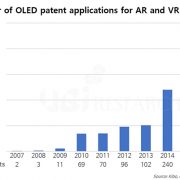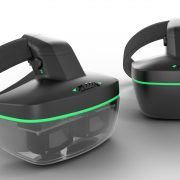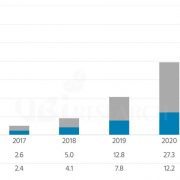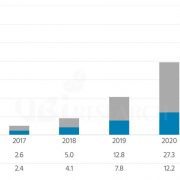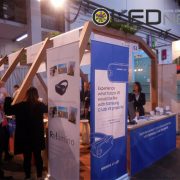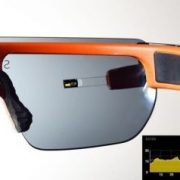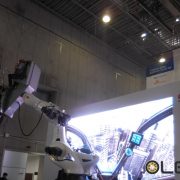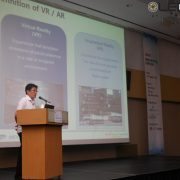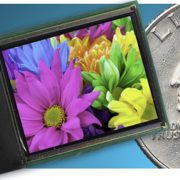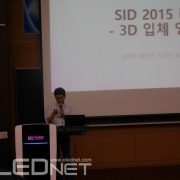글
상반기 OLED 시장 결산과 주요 기술 분석
/0 코멘트/카테고리: Exhibition, 포커스온 /작성자: OLEDNETOLED 시장조사 전문 리서치 업체인 유비리서치는 오는 6월 28일(목) 서울 코엑스 컨퍼런스룸 3층에서 ‘상반기 OLED 시장 결산과 주요 기술 분석 세미나’를 개최한다.
2018년 상반기 OLED 시장을 결산을 통해 주요 이슈를 되짚어 보고 OLED 산업을 투자, 경제 관점으로 분석하여 2018년 하반기 시장과 기술을 전망하는 자리가 될 것이다.
또한 이번 세미나는 차세대 OLED 기술로 각광받고 있는 OLED 조명, Stretchable, wearable, AR/VR, Micro LED 등 관련분야 핵심 전문가분들을 모시고 OLED 미래 기술이 어떻게 전개될 것인지를 미리 확인해 볼 수 있는 자리가 될 것으로 예상된다.
세미나의 주제는 △’ 2018 상반기 프리미엄 TV시장 이슈와 전망’ △’2018 상반기 OLED 스마트폰 시장 이슈와 전망’ △ ‘폴더블 스마트폰과 BLUE TV 시장 전망’ △’차세대 OLED 어플리케이션인 스트레처블, 웨어러블 등’ △’가상 증강 현실 기기와 오토모티브 응용 현황 및 전망 ’ △ ‘마이크로 LED 기술 동향 및 전망’ △ ‘OLED 조명 기술 동향 및 전망’ 등의 발표가 예정되어 있다.
이번 세미나는 빠르게 진화하는 디스플레이 시장의 전망과 기술 트랜드를 예측하여 업체들의 시장 현황과 기술 변화를 파악하는데 큰 도움이 될 것으로 기대하고 있다.
PMOLED and Micro OLED Stand Out In the Wearable Device Market
/0 코멘트/카테고리: 미분류 /작성자: OLEDNETAt the 4th wearable expo being held from January 17th in TOKYO BIG SIGHT -Tokyo International Exhibition Center, many companies attracted the attention of participants by exhibiting OLED wearable devices and OLED panels. Particularly, at this exhibition, many wearable devices with PMOLED and micro OLED were displayed, which proved once again infinite possibilities of OLED.
First, ColorLink Japan unveiled its VR and AR devices with micro OLED. Micro OLED is a panel that can realize high resolution in small size by reducing OLED panel to micro size. “The micro OLED applied to ColorLink Japan’s VR equipment is 0.7-inch in size with FHD resolution, and we were able to manufacture more compact and scarce VR device by applying micro OLED”, said an official from ColorLink Japan.
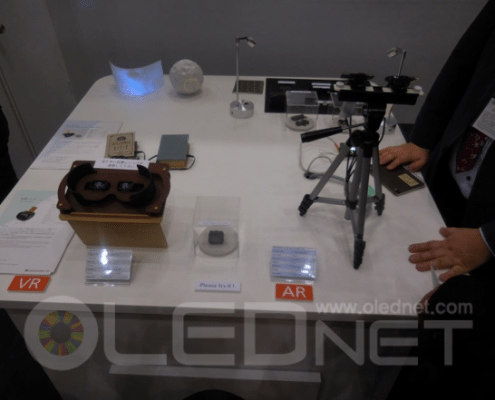
<ColorLink Japan’s Micro OLED VR and AR>
In addition, Fitbit and iWOWNfit exhibited smart bands with PMOLED. PMOLED refers to a passive matrix OLED that does not use TFT, which is a switching device, and is mainly applied to low resolution devices that display numbers or characters rather than high resolution-required devices. In relation to the reason for the application of PMOLED, both companies explained that they have been able to significantly reduce power consumption by applying PMOLED, and the OLED prices have fallen considerably so that they have sufficient price competitiveness.
Meanwhile, OLED panel makers also exhibited a number of OLED panels for wearable devices. Pioneer, which firstly produced mono color PMOLED for FM character broadcast in 1997, attracted participants by introducing a number of PMOLEDs and devices using this. Pioneer announced its goal to diversify its business centering on PMOLED, introducing PMOLED-applied Bluetooth speakers, smart watches, and AR devices.
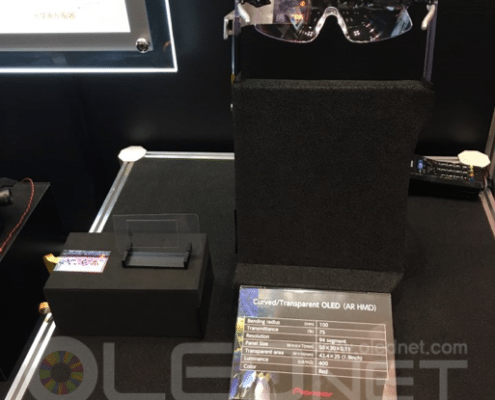
<Pioneer’s PMOLED Panel and AR>
RiTdisplay also attracted attention by exhibiting a number of wearable appliances and panels with many PMOLEDs. RiTdisplay said, “Since the AMOLED market is already occupied by Korea, it is inevitably lagging behind its productivity and price competitiveness”. “Instead, PMOLED enables easy customization with less production cost than AMOLED so it is competitive in the wearable device market.” Also, they announced that since smart bands will be more aggressive in this market due to lower ppi than smart watches and mobile devices, they will actively target the market.
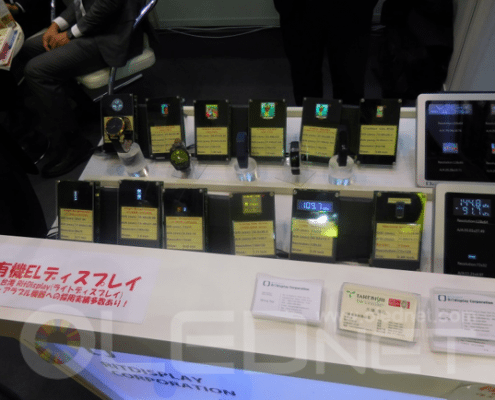
<RiTdisplay’s PMOLED Panels & Applications>
In addition to AMOLED which is leading the mobile device and TV market, various methods of OLEDs such as PMOLED and micro OLED are being actively applied to wearable devices, thereby expanding its influence. The future of OLED, which is being increasingly utilized, is expected.
PMOLED와 micro OLED, 웨어러블 기기 시장에서 빛을 발하다.
/0 코멘트/카테고리: Exhibition, 세트, 포커스온 /작성자: OLEDNET일본 도쿄 빅사이트에서 1월 17일부터 개최되고 있는 제 4회 wearable expo에서 다수의 업체들이 OLED 웨어러블 기기와 OLED 패널들을 전시하며 참가자들의 이목을 끌었다. 특히, 이번 전시회에서는 PMOLED와 micro OLED가 적용 된 웨어러블 기기가 다수 전시되어 OLED의 무궁무진한 발전 가능성을 다시 한번 확인 할 수 있었다.
먼저 ColorLink Japan는 micro OLED를 적용한 VR 기기와 AR 기기를 선보였다. Micro OLED는 OLED 패널을 마이크로 사이즈까지 축소시켜 작은 사이즈에서도 고해상도 구현이 가능한 패널이다. ColorLink Japan의 VR 기기에 적용 된 micro OLED는 크기가 0.7 inch에 FHD 해상도로써, 업체 관계자는 micro OLED를 적용하여 더욱 더 컴팩트하고 희소성 있는 VR 기기를 제작 할 수 있었다고 언급하였다.

<Micro OLED가 적용 된 ColorLink Japan의 VR 기기와 AR 기기>
또한, Fitbit과 iWOWNfit에서는 PMOLED가 적용 된 스마트 밴드들을 전시하였다. PMOLED는 스위칭 소자인 TFT가 적용 되지 않은 passive matrix OLED를 지칭하며, 고해상도가 필요한 기기보다는 숫자나 문자를 표현하는 저해상도 기기에 주로 적용되고 있다. PMOLED 적용 이유에 두 업체의 관계자들은 모두 PMOLED를 적용함으로써 소비전력을 크게 저감 시킬 수 있었다며, OLED 가격도 많이 하락했기 때문에 가격경쟁력도 충분히 갖추고 있다고 설명했다.
한편, OLED 패널 업체들도 다수의 wearable device용 OLED 패널을 전시하였다. 1997년 최초로 FM 문자방송수신용 mono color PMOLED를 처음 양산한 Pioneer는 다수의 PMOLED와 이를 활용한 기기들을 선보이며 참가자들을 매료시켰다. Pioneer는 PMOLED가 적용 된 블루투스 스피커와 스마트워치, AR 기기를 다수 선보이며, PMOLED를 중심으로 사업을 다각화 하겠다는 목표를 밝혔다.

<Pioneer의 PMOLED 패널과 AR 기기>
RiTdisplay 또한 다수의 PMOLED가 적용 된 웨어러블 기기와 패널을 다수 선보이며 이목을 집중 시켰다. RiTdisplay의 관계자는 “AMOLED 시장은 이미 한국이 점령하고 있는 상황이기 때문에 생산력과 가격 경쟁력에서 뒤쳐질 수 밖에 없다”고 설명하며, “대신 PMOLED를 통해 AMOLED보다 적은 생산 비용으로 쉬운 커스터마이징까지 가능하기 때문에 웨어러블 기기 시장에서는 경쟁력이 있을 것”이라 언급했다. 또한, 스마트 밴드는 스마트 워치와 모바일 기기보다 ppi가 낮아도 되기 떄문에 이 시장을 적극적으로 공략 할 것임을 밝혔다.

<RiTdisplay의 PMOLED 패널과 응용 기기들>
이처럼 모바일 기기와 TV 시장을 주도하고 있는 AMOLED 외에도 PMOLED와 micro OLED 등 다양한 방식의 OLED가 웨어러블 기기에 적극 적용되며 그 세력을 확장하고 있다. 점점 더 활용 영역이 넓어지고 있는 OLED의 미래가 기대된다.
Samsung Electronics, sets a profit record of 0.97 Trillion Won in the 3rd Quarter
/0 코멘트/카테고리: 미분류 /작성자: OLEDNETSamsung Electronics reported sales of KRW 62.05 trillion and operating profit of KRW 14.53 trillion through the conference call of the third quarter in 2017, and the display business recorded sales of KRW 8.28 trillion and operating profit of KRW 0.97 trillion. Display business sales increased 7.4% compared to the previous quarter and 17.3% compared to the previous year, but operating profit of 1 trillion fell with a decrease of 43.3% of the previous quarter and 4.9% the previous year. OLED sales are shown to occupy 60% of the display industry.
According to Samsung Electronics, in the 3rd quarter of 2017, main customers of OLED have increased through the launch of new flagship products focused on flexible products. However, its performance has decreased than the previous quarter due to factors such as increased costs of new OLED lines initial ramp-ups, and intensified price competition between rigid OLEDs and LCD panels.
Samsung Electronics plans to increase supply of flexible products in OLED in the 4th quarter, and expand sales of rigid OLED products to secure profitability. In the LCD industry, there are off-seasons and excess supplies resulting to supply and demand imbalance, but profitability is to be secured by strengthening yield and cost activities and expanding sales portion of high value-added products such as UHD, large-format, and QD.
In 2018, OLEDs are expected to become the mainstream in the mobile display market, with expectations that flexible panel dominance will be particularly strong in the high-end product line. Samsung Electronics said it plans to develop a system to meet the flexible demand of major smartphone manufacturers and improve earnings by securing differentiated technologies.
In 2018, the LCD market may continue to expand in China and intensify competition among companies, but trend of large-sized and high-resolution TVs are expected to continue. Samsung Electronics states it will strengthen its strategic partnership with its customers and concentrate on improving profitability by promoting sales of high value-added products such as UHD, large format, QD, and frameless products.
Samsung Electronics sold 97 million mobile phones and 6 million tablets in the 3rd quarter of 2017. Mobile phone sales in the 4th quarter are expected to decline Quarter on Quarter, but tablet sales are expected to increase QoQ. TV sales reached a record around 10 million units, and sales in the 4th quarter were expected to rise to mid-30%.
10.4 trillion was invested in facility during the 3rd quarter of Samsung Electronics, of which 2.7 trillion was invested in display. Displays are reported to have additional production lines to meet customer demands for flexible OLED panel.
CEO Chang-Hoon Lee of Samsung Display said, “In the case of small and medium-sized OLEDs, we are planning to apply it to AR, VR, foldable, and automotive industry.” Also, “In Automotives, OLEDs are focused on energy efficiency, design differentiation, and black image quality which is critical to driver safety, in preparation with client company cooperation.” Additionally, “Foldable is constantly being researched and developed in line with customer demand, and is centered on enhancing the level of perfection demanded by the market and customers. We will work with our clients to prepare these for mass production desired by our customers.”
삼성전자, 3분기 디스플레이 사업 영업이익 0.97조원 기록
/0 코멘트/카테고리: 디스플레이, 포커스온 /작성자: OLEDNET삼성전자는 31일 진행된 2017년 3분기 실적 컨퍼런스콜을 통해 매출 62.05조원, 영업이익 14.53조원을 기록했으며, 이 중 디스플레이 사업에서 매출 8.28조원, 영업이익 0.97조원을 기록했다고 밝혔다. 디스플레이 사업 매출은 전분기 대비 7.4%, 전년 동기 대비 17.3% 증가했지만, 영업이익은 1조원대가 무너지며 전분기 대비 43.3%, 전년 동기 대비 4.9% 감소했다. 디스플레이 사업에서 OLED 매출은 60% 후반의 비중을 차지했다고 밝혔다.
삼성전자에 따르면 2017년 3분기에는 OLED 부문에서 주요 고객사의 플래그십 신제품 출시로 flexible 제품을 중심으로 매출이 증가했다. 하지만 신규 OLED 라인 초기 ramp-up에 따른 비용 증가, rigid OLED와 LCD 패널 간의 가격 경쟁 심화 등의 영향으로 전분기 대비 실적이 감소했다고 설명했다. LCD 부문은 주요 고객의 재고 조정 등에 의해 판가 하락 영향으로 실적이 약화되었고 밝혔다.
삼성전자는 4분기 OLED 부문에서 flexible 제품의 생산성을 높여 공급을 본격적으로 확대하고, rigid OLED 제품 판매를 확대해 수익성을 확보할 계획이다. LCD 부문의 경우 계절적 비수기와 업계의 공급 초과 상황이 지속되어 수급 불균형의 우려가 있으나, 수율과 원가 개선 활동을 강화하고, UHD, 대형, QD 등의 고부가 제품 판매 비중을 확대해 수익성 확보에 주력할 방침이라고 밝혔다.
2018년에 OLED는 모바일 디스플레이 시장에서 mainstream이 될 것으로 기대되며, 특히 high-end 제품군에서 flexible 패널의 지배력 강화가 전망된다고 밝혔다. 삼성전자는 주요 스마트폰 업체들의 flexible 수요에 적기 대응할 수 있는 시스템을 구축하고, 차별화된 기술 확보를 통해 실적 개선을 추진할 계획이라고 설명했다.
2018년에 LCD 시장은 중국의 생산량 확대가 지속되고 업체간 경쟁도 심화되지만, TV의 대형화와 고해상도 트렌드 또한 지속될 것으로 전망된다고 밝혔다. 삼성전자는 고객사와의 전략적 파트너십을 견고히 하고, UHD, 대형, QD, frameless 등 고부가 제품과 디자인 차별화 제품의 판매 확대를 추진해 수익성 제고에 집중할 방침이라고 밝혔다.
삼성전자는 2017년 3분기에 휴대폰 9,700만 대, 태블릿 600만 대의 판매량을 기록했다. 4분기 휴대폰 판매량은 전분기 대비 감소할 것으로 예상하지만, 태블릿 판매량은 전분기 대비 증가할 전망이라고 밝혔다. TV의 판매량은 약 1,000만대를 기록했으며, 4분기 판매량은 30% 중반대의 상승을 예상했다.
삼성전자의 3분기 시설 투자는 총 10.4조원이 집행되었고, 이 중 디스플레이에 2.7조원이 투자됐다. 디스플레이의 경우는 flexible OLED 패널 고객 수요에 대응하기 위한 생산라인 증설 투자가 진행중이라고 설명했다.
삼성디스플레이 이창훈 상무는 “중소형 OLED의 경우 현재 주력인 스마트폰 외에도 AR, VR, foldable, automotive 등에 확대 적용할 예정”이라고 설명했다. 이어 “Automotive에서는 OLED가 에너지 효율, 디자인 차별화, 운전자의 안전에 중요한 블랙 화질 구현 등의 장점으로 관심이 집중되고 있어 앞으로 고객사와 협력을 통해 준비하겠다”고 설명했다. 또한, “Foldable은 고객 수요에 맞춰 지속적으로 연구, 개발 중이며 시장과 고객이 원하는 수준의 완성도 제고에 중심을 두고 있다. 고객사와 협력을 통해 고객이 원하는 시점에 양산 가능하도록 준비하겠다”고 덧붙였다.
가상(VR)·증강현실(AR)이 선택한 ‘OLED 디스플레이’
/0 코멘트/카테고리: 디스플레이, 포커스온 /작성자: OLEDNET최근 4차 산업혁명을 주도하고 있는 가상·증강현실 기기에 OLED 디스플레이를 채용함으로써, LCD에 비해 응답속도가 빠르고 풍부한 색감과 높은 명암비 구현이 가능해짐에 따라, 사용자는 보다 현실감 있고 생동감 넘치는 영상을 체험할 수 있게 되었다.
가상·증강현실용 OLED 디스플레이는 게임, 광고, 교육 등 전 산업 분야에 걸쳐 폭넓게 활용되고 있으며, 이에 따라 관련 출원이 최근 활발하게 이루어지고 있는 것으로 나타났다.
특허청에 따르면, 가상·증강현실용 OLED 디스플레이의 출원은 매년 증가 추세에 있으며, 특히 최근 3년간 관련 출원이 크게 증가한 것으로 나타났다.
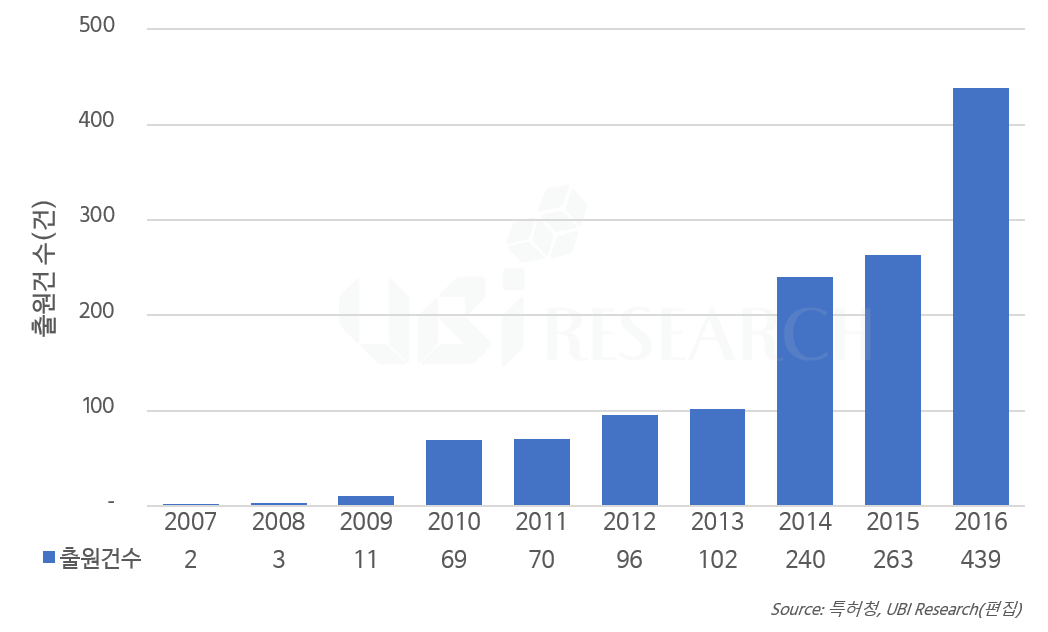
<가상·증강현실용 OLED 디스플레이 출원 동향, 출처: 특허청>
최근 연도별 출원 현황을 보면, 2014년 240건, 2015년 263건, 2016년 439건으로, 2014년을 기점으로 가상·증강현실용 OLED 디스플레이 기술에 관한 출원 건은 급격히 증가하였다.
가상·증강현실용 OLED 디스플레이 분야 출원이 최근에 증가한 이유는 가상·증강현실 기기의 본격적인 대중화를 위한 선결 과제로 해상도와 응답속도, 활용성, 착용감, 가격 등 다양한 조건들의 발전이 요구되고 있는데, OLED 디스플레이는 실감나는 영상을 구현할 수 있고, 플렉시블 설계가 용이하다는 점에서 기존의 LCD에 비해 이러한 니즈를 월등하게 충족할 수 있기 때문인 것으로 보인다.
또한, 2020년 기준으로 가상·증강현실 시장 규모가 약 800억 달러로 크게 증가될 것이라는 전망에 비추어 볼 때, 가상·증강현실 기기에 적합한 OLED 디스플레이가 플렉시블, 롤러블, 벤더블 및 스트레쳐블 디스플레이 형태로 다양하게 개발됨에 따라 가상·증강현실용 OLED 디스플레이 기술에 관한 출원의 증가 추세는 지속될 것으로 예상된다.
가상·증강현실용 OLED 디스플레이 기술에 관한 출원인별 출원 현황(2007년 ~ 2016년)은 대기업 774건(60%), 중견·중소기업 142건(11%), 대학‧연구기관 72건(6%), 개인 70건(5%)을 출원하였고, 외국인이 237건(18%)을 출원한 것으로 조사되었다.
주요 출원 업체별로는 엘지전자 465건, 삼성전자 216건, 마이크로소프트사 51건, 삼성디스플레이 29건, 에스케이플래닛 20건, 퀄컴 17건, 엘지디스플레이 17건 순으로 집계되어, 가상·증강현실용 OLED 디스플레이 관련 기술이 국내 기업에 의해 주도되고 있음을 알 수 있다.
가상·증강현실용 OLED 디스플레이의 응용분야별 출원 현황을 보면 개인용 엔터테인먼트(게임, 테마파크, 체험관) 426건, 국방(전쟁 시뮬레이션, 무기개발, 전투기 조종) 169건, 광고 141건, 의료(3차원 시뮬레이션, 가상 내시경, 모의수술) 131건, 헬스케어 123건, 영화 117건 등으로 나타나, 가상·증강현실용 OLED 디스플레이 기술은 게임과 국방 산업 분야에 가장 활발히 활용되고 있음을 알 수 있다.
특허청 김종찬 디스플레이기기심사팀장은 “TV나 휴대폰과 같은 개인용 제품 중심으로 발달한 OLED 디스플레이는 뛰어난 영상제공 능력을 기반으로 가상·증강현실 뿐만 아니라 새로운 산업분야로 활용 영역의 확장이 예상되며, 아울러 OLED 디스플레이의 수명 연장 및 사용 온도 범위 확대 등 성능 향상 과제를 해결하기 위한 기술과 관련된 출원이 증가할 것으로 예상된다.”고 전망했다.
특허청은 OLED 디스플레이 분야의 특허경쟁력 강화를 위하여, 산업계와 특허청 간의 소통과 협력의 일환으로『IP Together』행사를 정기적으로 개최해 왔으며, ‘개정 특허법 설명회’ 등을 통해 관련 정보를 지속적으로 제공해 나갈 계획이다.
한편, 유비리서치가 발간한 ‘AR과 VR용 디스플레이 시장 보고서’에 따르면 AR과 VR용 OLED는 2017년 260만개 출하되어 52%의 시장 점유율을 차지할 것으로 예상하였으며, 2021년에는 5,200만개 출하되어 80%의 시장 점유율을 차지할 것으로 전망하였다.
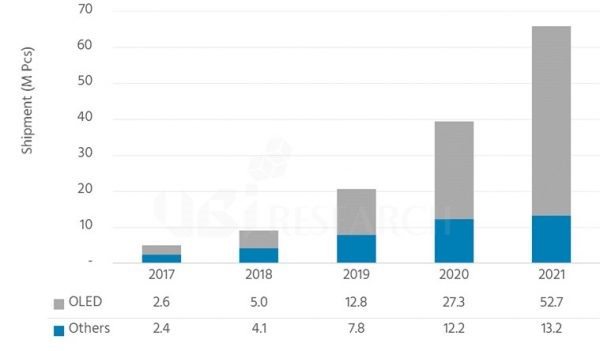
<AR과 VR용 디스플레이 타입별 출하량 전망, 출처: 유비리서치>
‘OLED display’ selected by virtual (VR) · Augmented Reality (AR)
/0 코멘트/카테고리: 미분류 /작성자: OLEDNETBy adopting OLED display in virtual and augmented reality devices, which are leading the fourth industrial revolution in recent years, users can experience more realistic and lively images with faster response time, richer color and higher contrast ratio comparing to LCD.
OLED displays for virtual and augmented reality have been widely used in all industries including games, advertising, and education, and related applications have recently been actively pursued.
According to the Korean Intellectual Property Office (KIPO), the filing of OLED display for virtual and augmented reality is on an increasing trend each year, in particular, the number of related applications has greatly increased over the last 3 years.
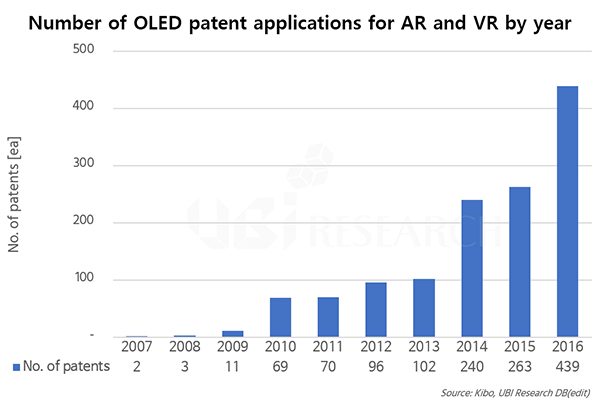
<OLED display application trend for virtual and augmented reality, Source: Korean Intellectual Property Office>
According to the recent filing status by year, there are 240 applications in 2014, 263 in 2015, and 439 in 2016, and applications for OLED display technologies for virtual and augmented reality have increased rapidly from 2014.
The reason for the recent increase in applications for virtual and augmented reality OLED display fields is that the development of various conditions such as resolution, response time, usability, comfort, and price is required as a preliminary task for popularization of virtual and augmented reality devices and OLED displays can realize realistic images and are easy to design with flexibility, which is why they can meet these needs much better than existing LCDs.
Also, given the prospect that the virtual and augmented reality market will increase to about $ 80 billion by 2020, OLED displays suitable for virtual and augmented reality devices are being developed in various forms such as flexible, rollable, bendable, and stretchable displays, and it is expected that applications for OLED display technology for virtual and augmented reality will continue to increase accordingly.
For the filing status of OLED display technology for virtual and augmented reality (2007 ~ 2016), there are 774 cases (60%) of large companies, 142 cases (11%) of medium and small-sized companies, 72 cases (6%) of universities and research institutes, 70 individual cases (5%) 237 foreigner cases (18%).
By major application companies, 465 cases of LG Electronics, 216 cases of Samsung Electronics, 51 cases of Microsoft Corporation, 29 cases of Samsung Display, 20 cases of SK Planet, 17 cases of Qualcomm, 17 cases of LG Display, It can be seen that related technology is dominated by domestic companies.
As for the status of OLED display application field for virtual and augmented reality applications, there are 426 cases of personal entertainment (game, theme park, experience), 169 cases of defense (war simulation, weapons development, fighter pilot), 141 cases of advertisement, 131 cases of medical treatment (3D simulation, virtual endoscopy, simulation), 123 cases of healthcare, 117 movies, etc., indicating that OLED display technologies for virtual and augmented reality are most actively used in the game and defense industries.
“OLED displays, which are developed mainly for personal use products such as TVs and mobile phones, are expected to expand into new industries as well as virtual and augmented reality based on their superior image presentation capabilities,” said Kim Jong-Chan, head of the screening team in the Korean Intellectual Property Office (KIPO). In addition, we expect to see increased applications related to technologies to address performance improvement challenges, such as extending the life of OLED displays and extending the operating temperature range. “.
In order to strengthen the patent competitiveness of OLED display field, KIPO has regularly held “IP Together” event as part of communication and cooperation between industry and patent office, and will continue to provide related information through the “Revised Patent Law Seminar”.
On the other hand, according to the ‘Display Market Report for AR and VR’ published by UBi Research, OLED for AR and VR are expected to be shipped by 2.6 million units in 2017, accounting for 52% of the market share and 52 million units in 2021 accounting for 80% of the market share.
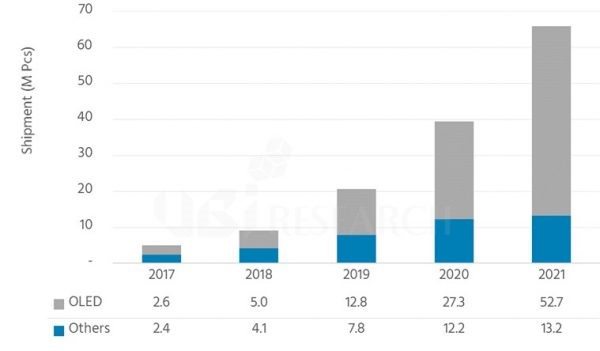
<Shipment forecast by display type for AR and VR, Source: UBI Research>
Fraunhofer FEP will show bidirectional AR / VR head mounted display devices based on OLED microdisplay.
/0 코멘트/카테고리: 미분류 /작성자: OLEDNETFraunhofer FEP announced that they would show bidirectional AR / VR head mounted display devices based on OLED microdisplay at AWE Europe 2017 from October 19-20. According to Fraunhofer FEP, OLED microdisplay supports SVGA (800 x 600) resolution and can display augmented reality and virtual reality of 2D and 3D content via USB interface and HDMI connection. In addition, it is known that it is possible to use an eye tracking system that uses a photodiode to detect a user’s gaze.
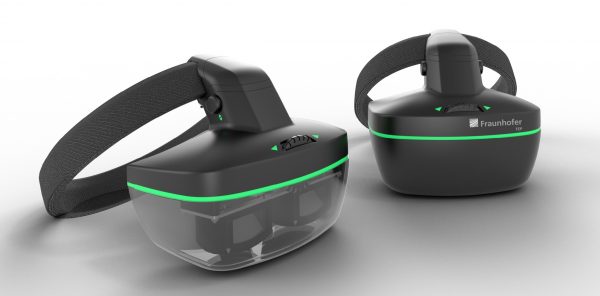
<New HMD device of Fraunhofer FEP, Source: Fraunhofer FEP>
Judith Baumgarten, developer of Fraunhofer FEP, commented, “This exhibition will showcase the quality and versatility of OLED microdisplay,” he said. “It will be a great opportunity to demonstrate Fraunhofer FEP know-how in electronic design.”
In the meantime, AR/VR devices have been developed mainly in the fields of entertainment and games. Fraunhofer FEP, however, is expected to support designers, engineers, surgeons, etc. and enable them to be used as educational media in almost every field.
On the other hand, augmented reality and virtual reality technology are attracting great attention as one of the main technologies of the 4th industrial revolution that has recently attracted attention, and products such as Oculus Rift and Gear VR are continuously being released. According to UBi Research, the AR/VR market will expand full scale in 2019, when 5G is introduced, which can mass-produce UHD contents and transfer large volumes of content fast and the total revenues of virtual reality and augmented reality products will reach $ 58.7 billion by 2021.
Fraunhofer FEP, OLED microdisplay 기반의 양방향 AR/VR HMD 기기를 선보일 예정
/0 코멘트/카테고리: 세트, 포커스온 /작성자: OLEDNETFraunhofer FEP가 오는 10월 19일부터 20일까지 진행되는 AWE Europe 2017에서 OLED microdisplay 기반의 양방향(bidirectional) AR/VR HMD(head mounted display) 기기를 선보일 예정이라 밝혔다. Fraunhofer FEP에 따르면, OLED microdisplay는 SVGA(800 x 600) 해상도를 지원하고 USB 인터페이스와 HDMI 연결을 통해 2D와 3D 컨텐츠의 증강 현실과 가상 현실을 표현할 수 있다. 뿐만 아니라, 포토 다이오드를 사용하여 이용자의 시선을 감지하는 시선 인식 시스템(eye tracking system)이 가능한 것으로 알려졌다.

<Fraunhofer FEP의 새로운 HMD기기, 출처 : Fraunhofer FEP>
Fraunhofer FEP의 개발자인 Judith Baumgarten은 “이번 전시를 통해 OLED microdisplay의 품질과 다기능성을 보여줄 수 있을 것”이라며 “전자 설계 분야에서 Fraunhofer FEP의 노하우를 입증할 수 있는 좋은 기회가 될 것이다”라고 언급했다.
그동안 AR/VR 기기는 엔터테인먼트와 게임 분야 위주로 개발이 이루어졌다. 하지만 Fraunhofer FEP은 이번에 개발 된 기기를 통해 디자이너와 엔지니어, 외과의사 등의 업무를 지원하고 거의 모든 분야에서 교육 매체로 사용될 수 있을 것으로 기대하고 있다.
한편, 증강 현실과 가상 현실 기술은 최근 주목 받고 있는 4차 산업혁명의 주요 기술 중 하나로써 큰 관심을 받고 있으며 Oculus Rift나 Gear VR과 같은 제품들이 지속적으로 출시 되고 있다. UBi Research에 따르면, UHD 컨텐츠 양산과 대용량 컨텐츠의 빠른 전송이 가능한 5G가 도입 되는 2019년에 AR/VR 시장이 본격 확대 되어 2021년에는 가상 현실과 증강 현실 제품의 전체 매출액이 587억 달러가 될 것으로 전망했다.
iMiD 2017 Industrial Forum, a networking event to predict the next generation OLED market
/0 코멘트/카테고리: 미분류 /작성자: OLEDNET
■ “Finding a new OLED market” – Discussing OLED replacement in view of OLED application development
■ Discussing new technologies of future display (LCD, QD-LCD, OLED)

The potential of future OLED development is inexhaustible as OLED can be applicable to all industries including VR / AR, automotive, aerospace, and lighting not content with smart phone and TVs. There has been growing public interest in OLED in many different industries. To meet the market demand, Ubi Research, a market research company co-hosts ‘iMiD2017 Industrial Forum’ with Korea Display Society (KIDS) in BEXCO, Busan on 30th of August.
The forum will proceed with a panel discussion among key specialists and presentation, which will enable people from many different industries to exchange information not only on the display market but also current OLED market status, technology and explore a new market potential generated in the future.
In the first session ‘look for a new OLED market’, OLED replacement will be presented in view of OLED application development. The key players include Dr. Teruo Tohma, WooSeok Jeong, principal research fellow at the Electronics and Telecommunications Research Institute (ETRI), Julian K chang, Managing director of Boeing Corporation, Professor TAKUYA KOMODA at Yamagata University, senior researcher, Michi Hisaishi, ALPINE Michihisa Onishi.
The second session, ‘Discussion of New Technologies in Future Display’ will provide insight into the latest products and technology trend of TV manufacturers competing with one another to dominate the next generation display market. Nam-Suk Oh, CEO of Samsung Electronics will present an updated LCD TV using Quantum dots technology under the title of “Quantum Dot and Advance of LCD-TV”.
In the OLED TV camp, under the title of “OLED, Now and Future”, Joon-Young Yang at LG Display will review the current status of OLED TV led by the current market trends, and also address OLED future implemented in a wide range of ‘flexible and rollable’ designs.
Weir Cao, senior researcher at TCL, will present both the technology status of the Colloidal Quantum Dots and TCL products applied to LCD in the market, under the topic of “TCL Display Technology with QDs”. The premium TV strategies are expectedly revealed. Lee Choong-hoon, CEO of Ubi research co-host of this forum, offered a time to summarize the premium TV market on the topic of ‘OLED TV market outlook by premium TV market expansion’ by analyzing the presentations of the companies that presented earlier.
For more information on the 17th iMiD2017 Industrial Forum, please visit iMiD2017 official website (http://imid.or.kr/2017/indi_forum.asp).
차세대 OLED 시장을 예측할 수 있는 네트워크의 장, iMiD 2017 Industrial Forum
/0 코멘트/카테고리: Exhibition, 포커스온 /작성자: OLEDNET
OLED는 스마트폰과 TV 뿐 아니라 VR/AR, 자동차, 항공, 조명 등 전 산업으로의 확산 혹은 융합이 가능하다는 점에서 앞으로의 OLED 발전 가능성은 무궁무진하다. 이 때문에 다양한 산업에서의 OLED 관심은 지속적으로 증가하고 있다.
이러한 수요를 충족시키기 위해 시장조사 전문 기관인 유비리서치는 오는 30일(수)에 부산 벡스코에서 ‘iMiD 2017 Industrial Forum’을 한국디스플레이학회(KIDS)와 공동 개최한다.
본 포럼은 각 분야 Key Player들의 발표와 토론(Panel Discussion)이 진행된다. 이는 디스플레이뿐만 아니라 다양한 산업 종사자들에게 OLED의 현 상황과 기술, 시장에 대한 정보를 교환하고 향후 창출될 신 시장을 모색하는 자리가 될 것으로 예상된다.
첫번째 ‘OLED 신시장을 찾아라’ 세션에서는 OLED application 발전으로 본 OLED replacement에 대한 발표가 진행된다. Key Player로는 테루오 토마(Teruo Tohma)박사, 한국전자통신연구원(ETRI)의 정우석 책임연구원, Boeing사의 Julian K chang총괄위원, 야마가타 대학교 타쿠야 코모다(TAKUYA KOMODA)교수, ALPINE사의 미치히사 오니시(Michihisa Onishi) 수석연구원이 발표할 예정이다.
두번째 ‘미래 디스플레이의 신기술에 대한 논의’ 세션에서는 차세대 디스플레이 기술경쟁이 펼쳐지고 있는 각 TV업체들의 최신 제품과 기술동향에 대해 확인 할 수 있다. LCD TV 진영을 대표하는 삼성전자 노남석 상무는 “Quantum Dot and Advance of LCD-TV”라는 주제로 Quantum dots 기술을 활용하여 개선 된 LCD TV에 대해 발표 할 예정이다.
OLED TV 진영에서는 LG 디스플레이의 양준영 담당이 “OLED, Now and Future”라는 주제로 현재 시장 및 트렌드에 따른 OLED TV의 현황에 대한 리뷰뿐만 아니라 flexible과rollable 등 다양한 디자인 구현이 가능한 OLED의 미래를 논의할 예정이다.
이어서 TCL의 Weiran Cao 수석연구원은 “TCL Display Technology with QDs”라는 주제로 TCL에서 연구개발중인 Colloidal Quantum Dots 기술현황과 LCD에 적용하여 출시 중인 TCL 제품에 대해 발표할 예정으로, 중국의 프리미엄 TV에 대한 전략을 확인할 수 있을 것으로 기대된다.
이번 포럼 공동주최사인 유비리서치 이충훈 대표는 ‘프리미엄 TV시장 확대에 따른 OLED TV시장 전망’을 주제로 앞서 발표한 업체들의 발표를 시장 관점에서 분석하여 프리미엄 TV 시장의 전망을 정리할 수 있는 시간을 마련하였다.
‘제17회 iMiD 2017 Industrial Forum’에 대한 더 자세한 정보는 iMiD 2017 공식홈페이지(http://imid.or.kr/2017/indi_forum.asp)를 통해 찾아볼 수 있다.
AR and VR Market, Active Expansion in 2019 – What Propels the Growth?
/0 코멘트/카테고리: 미분류 /작성자: OLEDNET- Forecast of US$ 58,700 million of total revenue of AR and VR in 2021
- Active expansion expected in 2019 with UHD contents mass production and fast transfer of large size content for VR through introduction of 5G
With recent ICT (Information and Communication Technologies) progress, fourth industrial revolution is receiving attention as the new growth engine. Along with the increased interest in augmented reality (AR) and virtual reality (VR), products such as Oculus Rift and Gear VR continue to be released.
Released AR products include glass types such as Microsoft’s HoloLens and Google’s Google Glass. HMD (Head Mounted Display) based VR type products include Oculus VR’s Oculus Rift, HTC’s Valve, and Sony’s PlayStation VR, and smartphone based VR types include Samsung Electronics’ Gear VR.
According to AR and VR Display Market Report published by UBI Research on 7th, AR and VR product shipment is expected to record 17 million units in 2017 with US$ 3,900 million revenue. UHD contents mass production and introduction of 5G for fast processing large size VR content are expected from 2019. Accordingly, total shipment of AR and VR products is estimated to increase at approximately 54% CAGR, and show 96.4 million units of shipment and US$ 58,700 million revenue.
The report divided the market by product and display for AR and VR market analysis, which is further categorized into AR and VR product total market, market by VR product, AR and VR use display total market, AR and VR use OLED, and market by other display type.
For immersive virtual reality experience without dizziness, display conditions such as latency, FOV, refresh rate, and high resolution were selected as key issues and were analyzed. AR and VR products released between 2014 and 2016 were arranged by types, categorized by display type and key companies and analyzed.
Furthermore, business status of key IT companies, including Apple and Facebook, is included handling AR and VR product release status, related patent, and related company takeover. With the information on key panel companies’ AR and VR product exhibition status, the report is expected to be conducive to understanding key trends of related companies.
UBI Research estimates AR and VR use OLED shipment to be 2.6 million units in 2017, with 2.4 million units of other displays. OLED is expected to show 52% of market share with 48% of other display. In 2021, AR and VR use OLED is expected to show shipment of 52 million units and occupy 80% of the market.
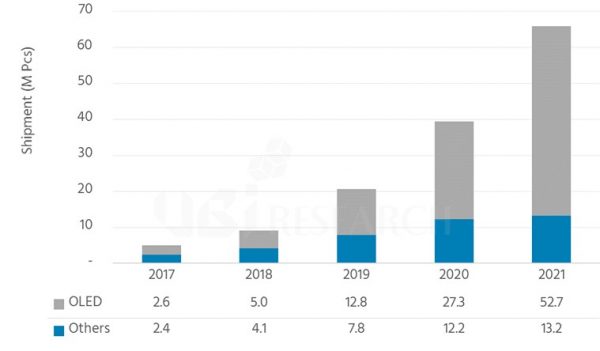
<Shipment Forecast by AR and VR use Display Type>
AR과 VR 시장, 2019년 본격 확대 – 그 동력은?
/0 코멘트/카테고리: 디스플레이, 세트, 시장, 포커스온 /작성자: OLEDNET■ 2021년 AR과 VR 전체 매출액 587억 달러 전망
■ UHD 컨텐츠 양산과 VR용 대용량 컨텐츠의 빠른 전송이 가능한 5G가 도입 되는 2019년 본격 확대 예상
최근 ICT(Information and Communications Technologies) 기술의 발전에 따라 4차 산업혁명이 새로운 성장 동력으로 주목 받고 있으며, 주요 기술 중 하나인 증강현실(Augmented Reality, 이하 AR)과 가상현실(Virtual Reality, 이하 VR)의 관심도 높아져 Oculus Rift나 Gear VR과 같은 제품이 지속적으로 출시 되고 있다.
상품으로 출시된 AR제품은 Microsoft의 HoloLens, Google의 Google Glass 등의 glass 타입이 있으며 VR 제품은 Oculus VR의 Oculus Rift와 HTC의 Vive, Sony의 PlayStation VR 등의 HMD(Head Mounted Display)-based VR 타입과 Samsung Electronics의 Gear VR 등의 Smartphone-based VR 타입이 있다.
7일에 발간 된 유비리서치의 AR과 VR용 디스플레이 시장 보고서에 따르면 2017년 AR과 VR 제품이 1,700만개 출하되어 39억 달러 규모의 매출액을 형성할 것으로 예상하였다. 특히, UHD 컨텐츠 양산과 VR용으로 대용량 데이터를 지연시간 없이 빠른 속도로 처리 또는 스트리밍 하기 위한 5G가 2019년부터 도입 될 것으로 예상됨에 따라 AR과 VR 제품 전체 출하량은 연평균 약 54% 성장하여 2021년 9,640만개, 전체 매출액은 587억 달러 규모를 형성할 것으로 전망하였다.
본 보고서에서는 AR과 VR 시장 분석을 위해 크게 제품별과 디스플레이별로 시장을 분류하였으며, 상세하게는 AR과 VR 제품 전체시장과 VR 제품 타입별 시장, AR용과 VR용 디스플레이 전체 시장, AR과 VR용 OLED와 기타 디스플레이의 타입별 시장으로 분류하였다.
어지러움 없이 몰입감 있는 가상현실을 체험하기 위해 latency와 FOV, refresh rate, 고해상도의 디스플레이 요구조건을 핵심이슈로 선정하여 분석하였으며 2014년부터 2016년까지 출시 된 AR과 VR 제품을 유형별로 정리한 후 디스플레이 종류와 주요 업체들의 제품 등으로 분류하여 비교 분석하였다.
또한, Apple과 Facebook 등 주요 IT업체들의 AR과 VR 제품 출시 현황과 관련 특허, 관련 업체 인수 등의 사업 추진 현황을 정리하였으며 주요 패널 업체들의 AR과 VR 제품 전시 동향을 정리하여 관련 업체들이 주요 동향을 파악하는데 도움이 될 것으로 예상된다.
유비리서치는 2017년 AR과 VR용 OLED는 260만개, 기타 디스플레이는 240만개 출하되어 시장 점유율은 OLED가 52%, 기타 디스플레이가 48%를 차지할 것으로 예상하였으며 2021년 AR과 VR용 OLED는 5,200만개 출하되어 80%의 시장 점유율을 차지할 것으로 전망하였다.
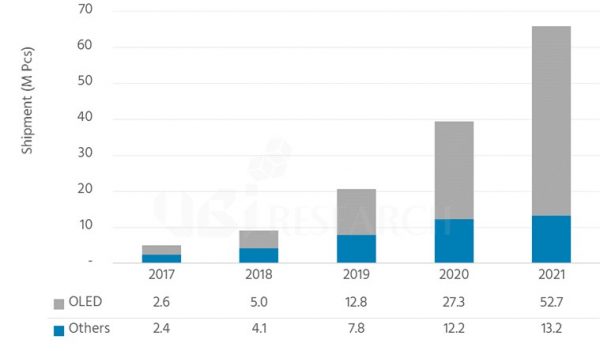
<AR과 VR용 디스플레이 타입별 출하량 전망>
[MWC 2017] Samsung Elec. lead AR/VR market with the variety of contents
/0 코멘트/카테고리: 미분류 /작성자: OLEDNETSamsung Elec. is expected to lead forward the market expansion of AR/VR, showing various AR/VR contents under developing at MWC 2017 which is being held in Barcelona, Spain from 27, Feb.
Samsung Elec. prepared the C lab exhibition hall at 4YFN in Fira Barcelona, and showed 4 types of contents for visitors such as: Relúmĭno which is a visual aids solution for Gear VR to help watching TV and reading books for persons who have low vision and blind, Monitor-less which is a VR/AR (Augmented Reality) solution that can be remotely operated for high-quality contents of PCs and smartphones, VuildUs which is a VR home interior service that experiences interior decorations in virtual reality, traVRer which is for the video travel service that helps experiencing of virtual trips by using 360-degree video watching.
Samsung Elec. is just developing for VR use now, but they revealed that Relúmĭno is being reviewed for applying to AR as a VR content effecting to the vision correction by VR algorithm that developed symptoms itself regarding to the disorder of refraction, cataracts and so on.
The principle for monitor-less is that reflects the screen of smartphones through micro OLED of the HD resolution located around the frame of glasses to its optical lens, and it is operated without a monitor of a smartphone and a PC as AR during ordinary. In addition, its merit is easy to use the VR contents by opaquely tailoring the glasses through an adaption of electro-discoloring glasses when users want.
VuildUs helps to make users arrange various furniture or do interior decorations into a virtual space through 360-degree video, and they are jointly developing contents regarding to be capable of purchasing desired items immediately in that system with architects and furniture manufacturers for commercialization.
traVRer is a content that can be freely exploring desired paths, time, positions and so on by building database based on 360-degree video which is taken from various angles, and traveling wherever you want to go into a virtual space.
These VR and AR contents revealed by Samsung Elec., are not commercialized yet, but they are catching public interests in aspects of various developments for providing convenient to users by VR and AR devices, and industries pay attention as expecting that Samsung Elec. will lead the market for contents not only for the devices of AR and VR.
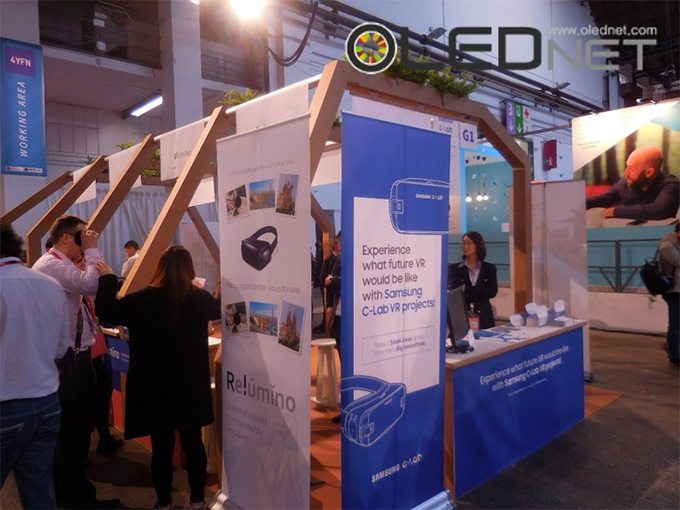
<Samsung Elec.’ C lab exhibition space, MWC 2017>
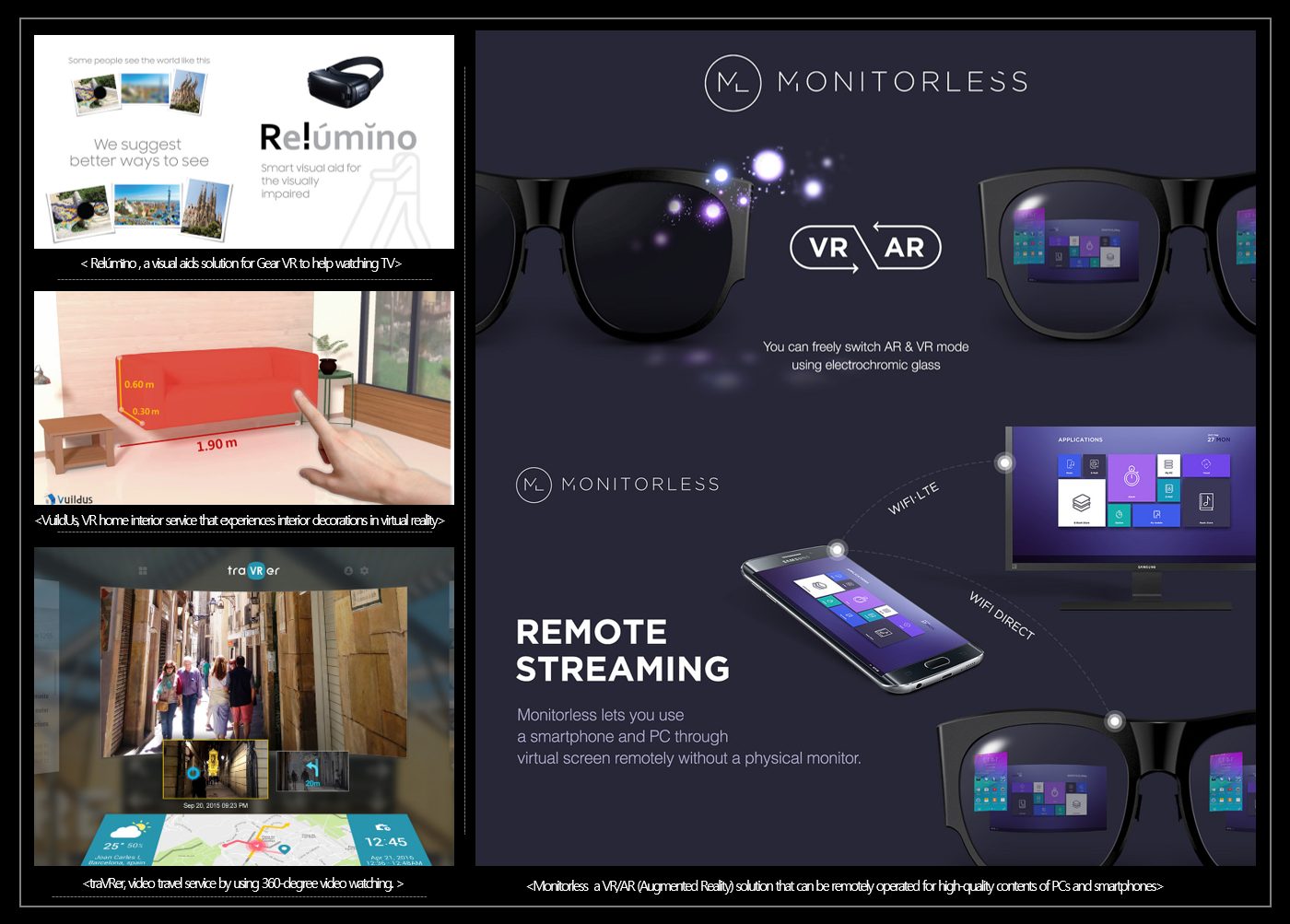
<Samsung Elec.’ VR/AR contents, Source : Samsung Elec. blog>
[MWC 2017] 삼성전자, 다양한 콘텐츠로 AR/VR 시장 리딩
/0 코멘트/카테고리: Exhibition, 세트, 포커스온 /작성자: OLEDNET2월 27일부터 스페인 바르셀로나에서 개최중인 MWC 2017에서 삼성전자는 개발중인 다양한 AR/VR 콘텐츠를 선보이며, AR/VR 시장확대에 앞장 설 것으로 전망된다.
삼성전자는 피라 바르셀로나(Fira Barcelona) 4YFN관 에서 C랩 전시관을 마련하였으며, 저시력인과 시각장애인들의 독서, TV 시청 등을 돕는 기어VR용 시각보조 솔루션 ‘릴루미노(Relúmĭno)와 스마트폰과 PC의 고사양 컨텐츠를 원격으로 사용 가능한 VR/AR(증강현실) 솔루션 ‘모니터리스(Monitorless), 가상현실에서 실내 인테리어를 경험하는 VR 홈 인테리어 서비스 ‘빌드어스(VuildUs)’ 360 영상을 이어보며 가상 여행을 체험하는 360 동영상 여행 서비스 ‘트래블러(traVRer)’ 4종류의 콘텐츠를 관람객에게 선보였다.
릴루미노는 굴절 장애, 백내장 등 시각장애 증상을 자체 개발한 VR용 알고리즘으로 시력을 교정해주는 효과를 볼 수 있는 VR 콘텐츠로서 삼성전자는 현재는 VR용으로 개발하고 있지만 추후 AR에도 적용하기 위해 검토 중이라 밝혔다.
모니터리스는 스마트폰 화면을 안경 테두리에 위치한 HD 해상도의 micro OLED를 통해 안경 유리부분의 optical lens로 반사시키는 원리로, 평상시에는 AR로서 스마트폰이나 PC용 작업을 모니터 없이 할 수 있다. 또한 안경의 유리는 전기변색유리를 채용하여 사용자가 원할 때 불투명하게 조절할 수 있어 VR용 컨텐츠를 사용할 수 있다는 장점이 있다.
빌드어스와 360도 영상을 통하여 사용자가 가상의 공간에 다양한 가구를 배치하거나 새로운 인테리어를 할 수 있으며, 원하는 품목은 바로 구매까지 가능하게 하는 콘텐츠로 현재 건축업체와 가구업체등과 상용화를 위해 공동으로 개발 중에 있다.
트래블러는 여러 위치에서 촬영된 360도 영상 Database를 구축하여 사용자가 원하는 위치, 원하는 시간, 원하는 경로등을 자유롭게 탐색할 수 있어, 가본적이 없는 곳이라도 가상여행을 할 수 있는 콘텐츠이다.
삼성전자가 이번에 공개한 VR/AR 콘텐츠는 아직 상용화되지는 않았지만 VR/AR기기가 사용자들에게 편의를 제공할 수 있는 분야를 다양한 관점에서 개발하고 있다는 점에서 큰 관심을 모으고 있으며, AR/VR 디바이스 뿐만 아니라 콘텐츠 시장에서도 삼성전자가 앞장 설 것으로 업계의 관심이 주목되고 있다.

<삼성전자 C랩 전시관 전경, MWC 2017>
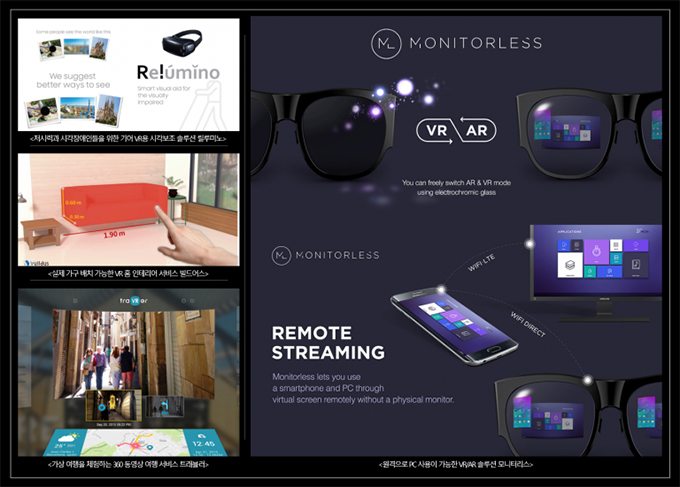
<삼성전자의 VR/AR 콘텐츠, 출처: 삼성전자 블로그>
Kopin, entering OLED microdisplay market for mobile VR and AR with new technology and business model
/0 코멘트/카테고리: 포커스온 /작성자: OLEDNET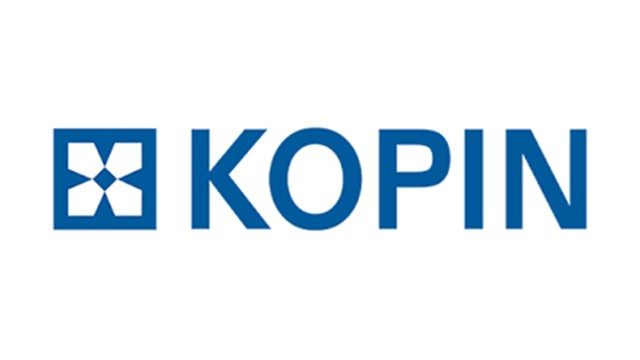 Kopin, mobile VR and AR wearable technology development company, announced on December 21(local time) that they will enter OLED microdisplay market for mobile VR and AR application. This company’s very first OLED microdisplay is expected to be tested during CES 2017 held next month.
Kopin, mobile VR and AR wearable technology development company, announced on December 21(local time) that they will enter OLED microdisplay market for mobile VR and AR application. This company’s very first OLED microdisplay is expected to be tested during CES 2017 held next month.
Kopin mentioned they developed a new silicon backplane structure which can implement OLED-on-silicon microdisplay without restrictions of size, weight, and power of the direct view products. The characteristic of this microdisplay is the ultra-high resolution, low power, and small form factor which provides excellent user experience in mobile and wearable system.
Kopin mentioned OLED-on-silicon microdisplay consists of two main factors, silicon backplane and OLED release layer. What is special of Kopin’s business model is that, where the expert knowledge is in Kopin, both of the two manufacturing operations are the very first full fab-less OLED microdisplay business model which is outsourced in private foundry. The main reason that Kopin got involved in this fab-less is that they expect the demand of OLED microdisplay will largely increase along with VR and AR, MR market, and also they think utilizing investments from other companies seems to be the best way to be prepared in the market because there is burden in capital investments in OLED foundry.
Kopin’s CEO, as well as the founder, Dr. John C.C. Fan said “Kopin is one of the biggest and successful suppliers of microdisplay system where more than 30 million of AMLCD and LCOS products are shipped”, and “by adding OLED microdisplay and module in product portfolio, Kopin provide various display technology and optics technology where customers evaluate various designs, and based on that, we were able to manufacture the product where the application is optimized.”
Lastly, Dr. Fan said “Kopin’s OLED microdisplay is specially manufactured so that the improved technology can be utilized well that are being improved in virtual and reinforcement, mixed reality applications field”, and mentioned “Kopin’s target is to occupy a portion where they can grow in the OLED microdisplay market”. Along with competing companies such as eMagin and Sony, what new type of OLED microdisplay panel will Kopin introduce is expected attract attention in CES 2017.
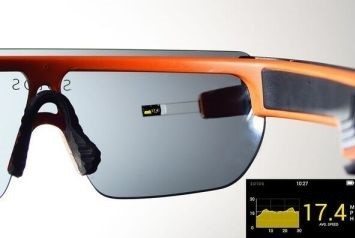
<Kopin’s world’s smallest smart glass display publicized in January 2016, businesswire.com>
BY HYUNJUN JANG, HANA OH
Kopin, 새로운 기술과 비즈니스 모델로 mobile VR과 AR용 OLED microdisplay 시장에 진입
/0 코멘트/카테고리: 기술, 포커스온 /작성자: OLEDNET
Mobile VR과 AR, wearable 기술 개발 업체인 Kopin은 현지시간으로 12월 21일, 모바일 VR 및 AR 어플리케이션을 위한 OLED microdisplay 시장에 진입 할 것이라고 발표했다. 이 회사의 첫 번째 OLED microdisplay는 다음 달에 열리는 CES 2017에서 시연 될 예정이다.
Kopin은 direct view 제품들의 크기나 무게, 전력의 제약 없이 고속 OLED-on-silicon microdisplay를 구현할 수 있는 새로운 실리콘 백플레인 구조를 개발했다고 밝혔다. 이 microdisplay는 모바일 및 wearable 시스템에 뛰어난 user experience를 제공하는 초 고해상도, 저전력 및 소형 폼 팩터를 특징으로 한다.
Kopin은 OLED-on-silicon microdisplay는 실리콘 백플레인과 OLED 방출 레이어라는 두 가지 핵심 요소로 구성 된다고 밝혔다. Kopin의 비즈니스 모델에 대한 독특한 점은 설계에 대한 전문 지식은 Kopin 내에 있는 반면, 두 제조 작업 모두 전용 파운드리에 아웃소싱 되는 최초의 full fab-less OLED microdisplay 비즈니스 모델이라는 점이다. Kopin이 fab-less에 뛰어든 가장 큰 이유는, VR과 AR, MR 시장이 성장할 때 OLED microdisplay에 대한 수요가 크게 증가할 것으로 보고 있으며, OLED 파운더리에 대한 자본 투자는 부담이 있기에 다른 기업들의 투자를 활용하는 것이 시장을 대비할 수 있는 최선의 방법이라고 보고 있기 때문이다.
Kopin의 CEO 겸 창립자인 Dr. John C.C. Fan은 “Kopin은 3 천만 개가 넘는 AMLCD 및 LCOS 제품이 출하 된 microdisplay 시스템의 가장 크고 성공적인 공급 업체 중 하나다“라고 말하며, “Kopin은 OLED microdisplay 및 모듈을 제품 포트폴리오에 추가함으로써, 고객에게 다양한 디스플레이 기술과 광학 기술을 제공하여 고객이 다양한 디자인을 평가하고, 이를 토대로 목표로 삼은 애플리케이션의 최적화 된 제품을 만들 수 있게 되었다.”라고 언급했다.
끝으로 Dr. Fan은 “Kopin의 OLED microdisplay는 가상과 증강, 혼합 현실 응용 분야의 향상되는 기술들을 잘 활용할 수 있도록 특별 제작되었다.”라고 말하며, “Kopin은 OLED microdisplay 시장의 성장에서 좋은 portion을 차지하는 것을 목표로 하고 있다”라고 밝혔다. eMagin과 Sony등 경쟁 업체들 속에서, Kopin이 다음달에 열리는 CES 2017에 어떠한 새로운 OLED microdisplay panel을 선보일지 귀추가 주목되고 있다.

<2016년 1월에 공개 된 Kopin의 세계에서 가장 작은 smart glass display, businesswire.com>
[KVRF2016] Even KVRF 2016, OLED leads VR industry
/0 코멘트/카테고리: 포커스온 /작성자: OLEDNETKorea VR festival 2016 (below “KVRF2016”) which can confirm present and future of virtual reality (VR) and augmented reality (AR) industry was opened from October 6 to October 9 at Nuridream Square of Sangam DMC.
In this event, 79 companies including global enterprises such as Samsung Electronics, Sangwha Planning, Oculus, Sony Co., etc. participated in, and new technology of each company was able to be checked on because approximately 157 booths were prepared in common production center, outdoor center, and business center.
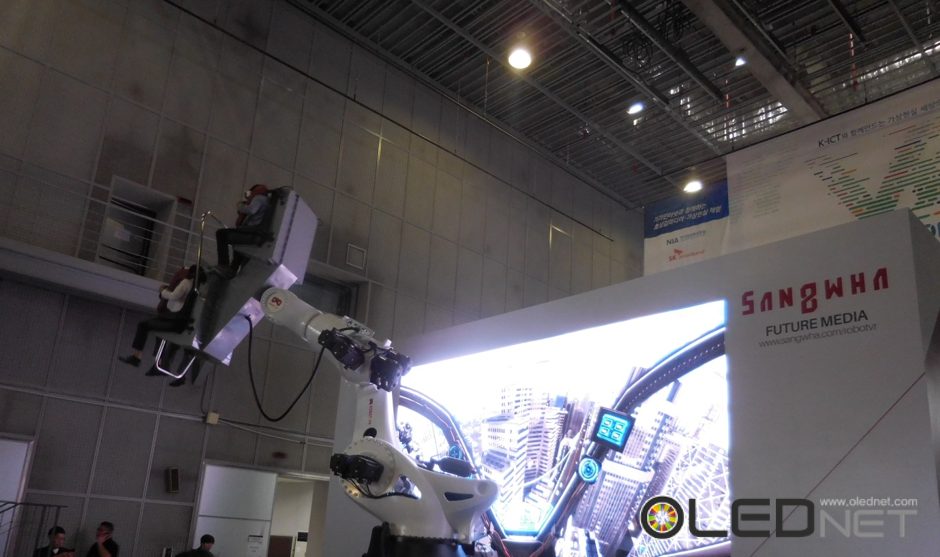
<VR Simulator using a huge robot arm of Sangwha Planning>
While interests in VR and AR are enlarged due to recent Poke’mon GO, many spectators visited this place with keen attention, each company shows off various interactive-typed contents such as roller coaster, paragliding, Sokkuram experiencing etc as well as game contents including FPS, sky jump etc accordingly. .Besides, this event did not simply limited to games such like Eye-tracking linked with cognitive concentration training system was displayed by BIOTECH, and VR goggles for military simulation by P&C Solution, and also demonstrated a fact that VR industry could be multiply applied to whole fields such as education, health, army etc.
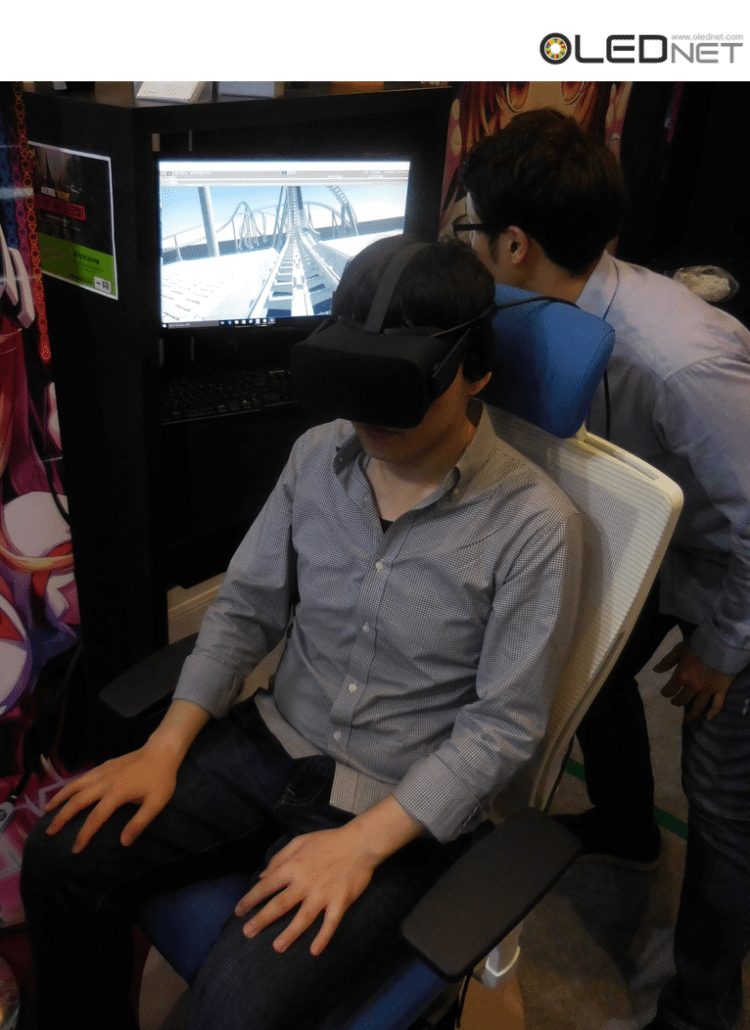
<VR 4D Simulator for Roller Coaster experiencing by MGAME Corp.>
One of interesting thing during observation was that AMOLED panel was used to majority expensive HMD (Head Mounted Display) devices. From Sony Playstation VR whose release is scheduled on 13th to Samsung Gear VR and Nibiru, a Chinese enterprise among Chinese companies, applied Samsung AMOLED. According to common opinions of company officials, they clarified AMOLED application due to issues relevant to response speed called Latency, even though there were BLU (Back Light Unit) and contrast problems which belonged to fundamental matters of LCD.. Latency indicates delaying time owing to inter-computer connections in on-line games frequently, but the reason is derived from limitations of implementing occurred delaying speed with LCD whenever moving user’s eyes, even though visual reality should quickly invoke new images too according to movement of user’s head in VR. No matter how the product has excellent computing power, AMOLED application is essential to make the delaying time shown in the screen to ‘0.’
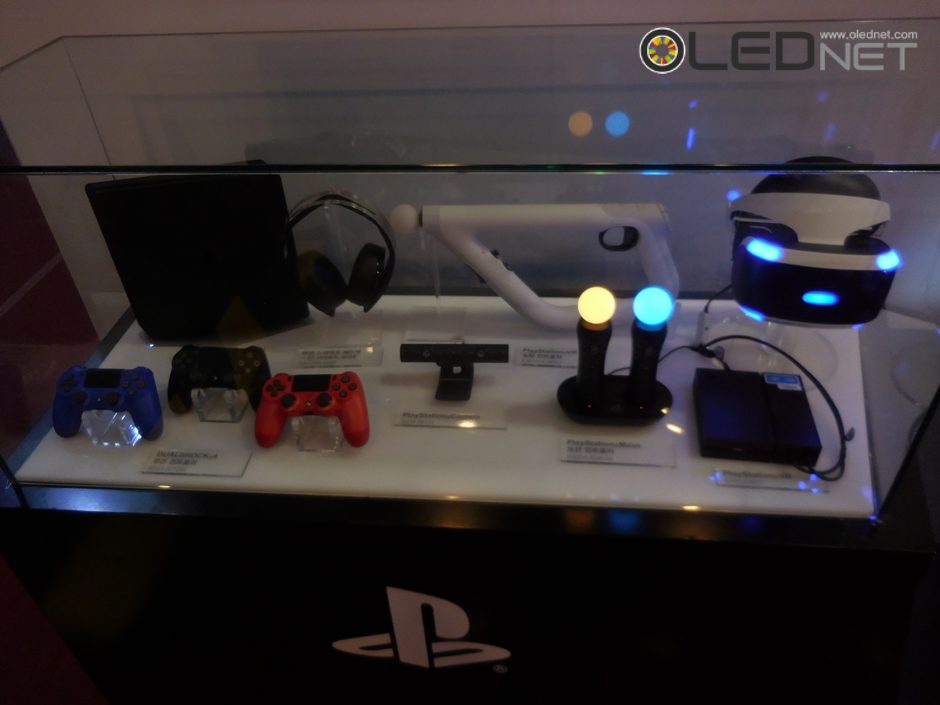
<VR product series of Playstation whose release are planned soon>
Interests in VR have been heightened such like a lot of enterprises and business start-ups in the exhibition hall were boasting their VR technology and VR café was opened in Gangnam, Korea first etc., but there was a realistic saying that even profit model could not be set up properly because related regulations on VR were vague yet and standardization in domestic was not clear as well. Business models and VR industry participation by enterprises become to be different according to legal regulations, so government should provide suitable assistance and methods to make systematic profit platform so that VR industry could strengthen global competitiveness.
[KVRF 2016] VR 산업도 OLED가 주도
/0 코멘트/카테고리: Exhibition, 포커스온 /작성자: OLEDNET가상현실(VR)과 증강현실(AR) 산업의 현재와 미래를 확인 할 수 있는 코리아 VR 페스티벌 2016(이하 KVRF2016)이 10월 6일부터 9일까지 상암 DMC 누리꿈스퀘어에서 개최되었다.
이번 행사에는 삼성전자, 상화기획, 오큘러스, 소니 등의 글로벌 기업들을 비롯해 79개 기업이 참가하였으며, 공동제작센터와 야외센터, 비즈니스 센터 등에 약 157개 부스가 마련되어 각 업체의 새로운 기술을 확인할 수 있었다.

<상화기획의 거대 로봇팔을 이용한 VR 시뮬레이터>
최근 포켓몬GO로 인해 VR과 AR에 대한 관심이 증가하면서 많은 관람객들이 관심을 갖고 방문하였으며, 각 기업들은 그에 맞게 FPS나 스키 점프 등의 게임 컨텐츠를 비롯하여 롤러코스터와 페러글라이딩, 석굴암 체험 등의 다양한 체감형 컨텐츠를 선보였다. 뿐만 아니라, BIOTECH에서는 Eye-tracking 연동형 인지 집중력 훈련 시스템을 선보였으며, P&C Solution에서는 군시뮬레이터용 VR 고글을 선보이는 등, 단순히 게임에만 국한 되지 않고 교육이나 건강, 군 분야 등 전 분야에 걸쳐 다양하게 적용 될 수 있다는 것을 보여주었다.

<엠게임의 롤러코스터 체험용 VR 4D Simulator 제품>
페스티벌을 돌아다니면서 한가지 흥미로웠던 점은 대다수의 고가형 HMD(Head Mounted Display)기기에는 AMOLED panel이 쓰였다는 것이다. 13일 출시 예정인 소니의 Sony Playstation VR부터 Samsung Gear VR, 그리고 중국 업체 중 Nibiru라는 업체에서도 Samsung의 AMOLED 제품을 적용하였다. 업체 관계자들의 공통적인 의견에 따르면, LCD의 본질적 문제인 BLU(Back Light Unit)와 명암비 이슈도 있지만, Latency라고 하는 반응속도와 관련 된 이슈로 인해 AMOLED를 적용한다고 밝혔다. 흔히 Latency는 온라인 게임에서 컴퓨터와 컴퓨터 간의 연결로 인한 지연시간을 말하지만, VR에서는 유저의 머리움직임에 따라 가상 현실 역시 새로운 이미지를 빠르게 불러와야 하는데, 이 시선을 옮길 때 마다 발생하는 지연속도를 LCD로 구현하기에는 무리가 있기 때문이라고 한다. 아무리 연산능력이 좋은 제품이라도 screen에서 보여지는 지연시간을 ‘0’에 가깝게 하기 위해서는 AMOLED 적용이 필수적인 것이다.

<곧 출시 예정인 Playstation의 VR 제품들>
이렇게 전시장 내 많은 기업과 스타트업 업체가 자사의 VR 기술력을 뽐내고 강남에서는 국내 최초로 VR 카페가 생기는 등 VR에 대한 관심이 점점 고조되고 있지만, 국내에서는 아직 VR 관련 규제가 애매하고 표준 역시 명확하지 않아 수익 모델조차 제대로 설정 할 수 없다는 현실적인 얘기도 들을 수 있었다. 법 규제에 따라 비즈니스 모델이 달라지고 업체들의 VR 산업 참여 역시 달라지기 때문에, 정부에서는 VR 산업의 글로벌 경쟁력 강화를 위해서는 체계적인 수익 플랫폼을 마련하기 위한 적절한 지원과 방안을 제공해야 할 것이다.
Samsung Display Principal Engineer, “VR∙AR will become comparable to 3D TV?”
/0 코멘트/카테고리: 디스플레이 /작성자: OLEDNET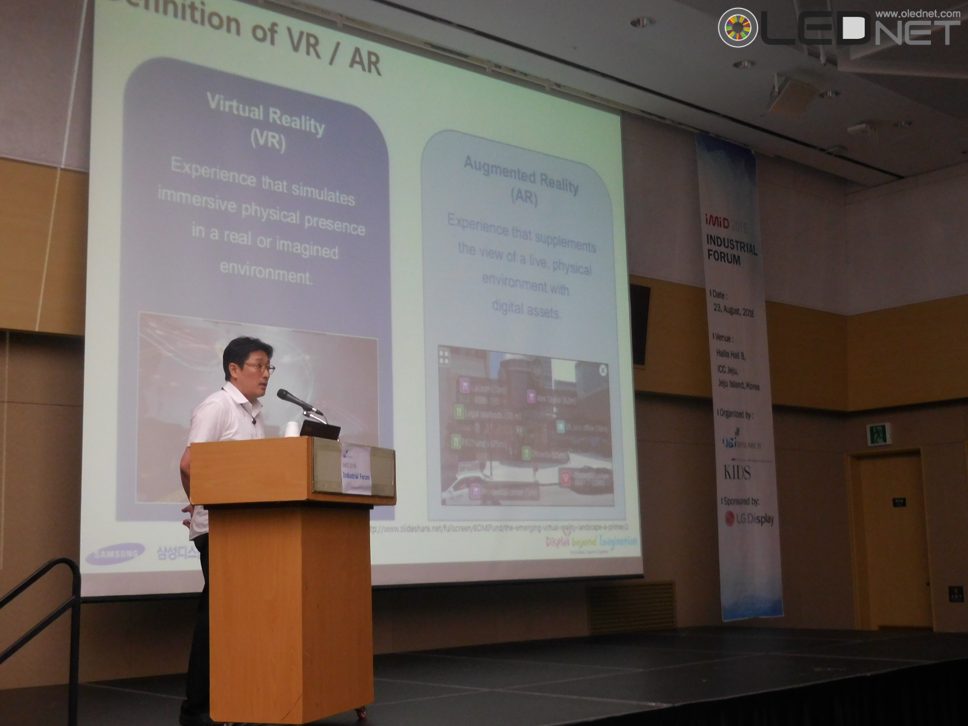
Samsung Display’s R&D Center principal engineer JongSeo Lee
Hyunjoo Kang / jjoo@olednet.com
Samsung Display’s R&D Center principal engineer JongSeo Lee suggested that VR∙AR market is an optimistic one unlike the 3D TV market of the past.
During the Industrial Forum held in ICC Jeju of South Korea, Lee gave a presentation titled ‘Introduction of Display Technology for VR/AR’, and mentioned concern from some sectors that the VR∙AR market will walk the same path as the 3D TV market.
Lee explained that the 3D TV market did not become vitalized due to the limits on contents production and 3D conversion technology, low quality of 3D display, lack of standards, etc. However, for VR∙AR market, contents and hardware such as Pokemon Go and HoloLens have arried, and many companies are active in this sector. Lee’s explanation is that leading companies including Apple, Microsoft, Intel, and Facebook are actively investing for VR∙AR sector and ecosystem is forming.
Using the Goldman Sachs materials, Lee emphasized that VR∙AR market will record USD 85,000 million by 2025. Furthermore, he explained technical characteristics of OLED, suitable for VR and AR, pointing out that transparent OLED is the key solution for AR technology actualization. He explained AR as the digital experience added to the actual physical environment or live screen, and transparent display actualizes this.
Compared to LCD, OLED has higher transmittance, and is considered the optimized solution for transparent display. For transparent OLED actualization, Lee told the audience that cathode with high transmittance and low resistance is needed and substrate should be able to withstand heat and be flexible. Metal types can be applied to the transparent area of the transparent display to produce mirror display. With this, AR can be experienced even using the form similar to mirrors. For this Lee added that high reflectance level and high color gamut are required.
삼성디스플레이 수석연구원 “VR·AR이 3DTV처럼 될거라고?”
/0 코멘트/카테고리: 기술, 디스플레이 /작성자: OLEDNET
삼성디스플레이 이종서 수석 연구원이 기조연설을 하고 있다.
강현주 / jjoo@olednet.com
삼성디스플레이의 이종서 수석연구원이“VR·AR 시장은 과거 3DTV 시장과 달리 긍정적이라는 관점을 제시했다.
8월 23일 제주도 제주ICC에서 열린 ‘인더스트리얼 포럼에서 이종서 수석연구원은 ‘VR/AR을 위한 디스플레이 기술’이라는 제목의 기조연설에서 VR·AR 시장이 과거 3DTV 시장과 비슷한 길을 걸을 것이라는 일각의 우려에 대해 언급했다.
이종서 수석연구원은 “3DTV 시장은 콘텐츠 생산 및 3D 전환 기술의 한계, 3D 디스플레이의 낮은 품질, 표준의 부재 등으로 활성화 되지 못했다”라며 “하지만 VR·AR 시장은 포켓몬고, 홀로렌즈 등 이미 콘텐츠와 하드웨어들이 등장했으며 수많은 업체들이 이 분야에 참여하고 있다”고 말했다.
애플, 마이크로소프트, 인텔, 페이스북 등 굴지의 기업들이 VR·AR 분야를 위해 적극 투자하고 있으며 생태계가 형성되고 있다는 게 그의 설명이다.
이 연구원은 골드만삭스의 자료를 인용해 “VR·AR 시장은 2025년까지 850억달러 규모를 형성할 것”이라고 강조했다.
이 연구원은 이어 가상현실(VR)과 증강현실(AR) 분야에 유용한 OLED의 기술적 특징들을 설명했다. 특히 투명 OLED가 증강현실(AR) 기술 구현을 위한 핵심 솔루션이라고 강조했다.
그는 AR에 대해 “실제 물리적 환경이나 실시간 화면에 더해지는 디지털 경험”이라고 설명하며 “투명디스플레이가 이를 구현해준다”고 말했다.
OLED는 LCD에 비해 투과율이 높아 투명 디스플레이를 만들기 위한 최적의 솔루션으로 여겨지고 있다. 이 연구원은 “투명 OLED 구현을 위해서는 높은 투과율 및 낮은 저항의 캐소드(cathode)가 필요하며 기판(substrate)이 열을 잘 견디며 플렉서블이 가능해야 한다”고 설명했다.
또 투명 디스플레이의 투명 영역에 메탈류를 적용, 미러(mirror) 디스플레이로 구현해 거울 같은 형태로도 AR을 즐길 수 있다. 이를 위해서는 높은 반사율과 고도의 색역(high color gamut)이 필요하다는 게 이종서 수석연구원의 설명이다.
OLED Microdisplay 업체 eMagin 상반기 매출 3.8%↓…라이선스 매출 100만달러 발생
/0 코멘트/카테고리: 디스플레이, 시장 /작성자: OLEDNET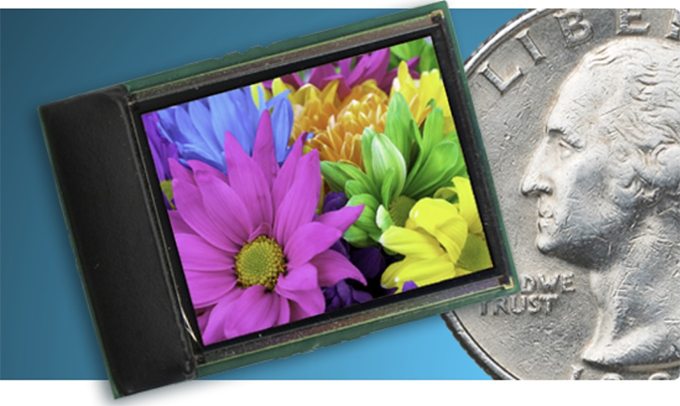
eMagin `s Microdisplay ( Source = eMagin )
강현주 / jjoo@olednet.com
가상 현실 (VR) 기기, 증강 현실 (AR) 기기 및 의료용 기기 등을 위한 OLED 마이크로디스플레이( Microdisplay ) 기술 업체인 eMagin 이 2016년 상반기 매출이 전년동기보다 3.8% 하락하고 미화 240만4000달러의 순 손실을 낸 것으로 나타났다.
11일 (현지시간) eMagin 이 발표한 2016년 2분기 실적자료에 따르면 이 회사는 지난 2분기에 전년 동기 대비 약 11% 하락한 550만 달러의 매출을 기록했다.
이로써 이 회사는 상반기 총 매출은 전년 동기보다 약 3.8% 떨어진 1253만 4000달러다. 상반이 제품 판매 매출은 큰 차이 없지만 정부로부터의 계약 수주가 지난해 같은 기간보다 부진했다.
하지만 전년 동기에는 없었던 라이선스 매출이 올해 상반기에는 100만 달러 발생했다. 이 회사는 VR 헤드셋 기술 관련 지적 재산권을 가지고 있다.
올해 2분기 이 회사는 216만 4000달러의 순손실을 기록, 상반기 순손실은 총 215만 달러다. 전년동기 25만 4000달러의 순이익에 비해 240만 4000달러가 하락했다.
이 회사의 CEO인 Andrew G. Sculley 는 “올해 2분기에는 정부로부터의 계약 규모가 작았고 우리 제조 기기에 다운타임이 있었다”고 설명했다.
Sculley CEO는 “우리는 소비자들의 수요가 확대되고 있는 VR, AR 시장에서 요구하는 해상도와 밝기를 충족할 수 있는 기술을 가지고 있는 유일한 업체라고 믿는다”라고 강조했다.
HUD and HMD Meet Virtual Reality and Soar
/0 코멘트/카테고리: 디스플레이 /작성자: OLEDNETAt SID 2015 Review Workshop held in Konkuk University on July 31, Inha University’s Associate Professor Jae-Hyeung Park announced that interest in HUD (head-up display) and HMD (head-mounted display) increased at SID 2015.
HUD signifies technology that provides diverse information for the driver beyond the role of a front glass that simply allows the outside to be viewed and provides protection. Through HUD, drivers can grasp vehicular and destination information without having to take eyes off the road. At this juncture, AR (augmented reality) HUD is more than a simple display as it recognize the user’s movements and applies it to the display.
In SID 2015 paper, Japan’s Ricoh termed the device that self-intervenes in the vehicular operation as ADAS (Advanced Driving Assistance System) and announced that the information from the device applied to HUD will be able to help the user’s recognition and decision making. It was also added that improved AR can be realized when the contrast range is increased to be equal to reality and reiterated and the distance from the virtual image is 5m.
HMD, as a head-mounted device, provides differentiated feelings of immersion compared to other displays. Due to the increased realism from the wide viewing angle, HMD was widely used as an entertainment display, but with the recent increased interest in AR, it is receiving much spotlight as an AR display device.
At SID 2015, the West Saxon University of Applied Sciences of Zwickau revealed an HMD device that actualizes AR naturally by changing the distance where image is shown according to the use by adjusting the focal distance. Zhejiang University’s college of Optical Science and Engineering used method of showing hologram to each user’s eyes using the light field concept that realizes the light strength to all directions from all points in 3D and produced improved AR.
Park explained that with SID 2015 as a starting point, the AR related HMD and HUD interest and research will increases greatly and that the trend will continue in future.
Samsung Electronics released HMD device Samsung Gear VR that can be used by plugging in to Galaxy S6 or Galaxy S6 Edge. Oculus VR and Sony Computer Entertainment each revealed OLED applied VR headset Oculus Rift and Project Morpheus, and scheduled release regular product in Q1 and H1 of 2016 respectively. Korea’s HLB released AproVIEW S2 which used virtual image distance actualization method, a first for HUD.
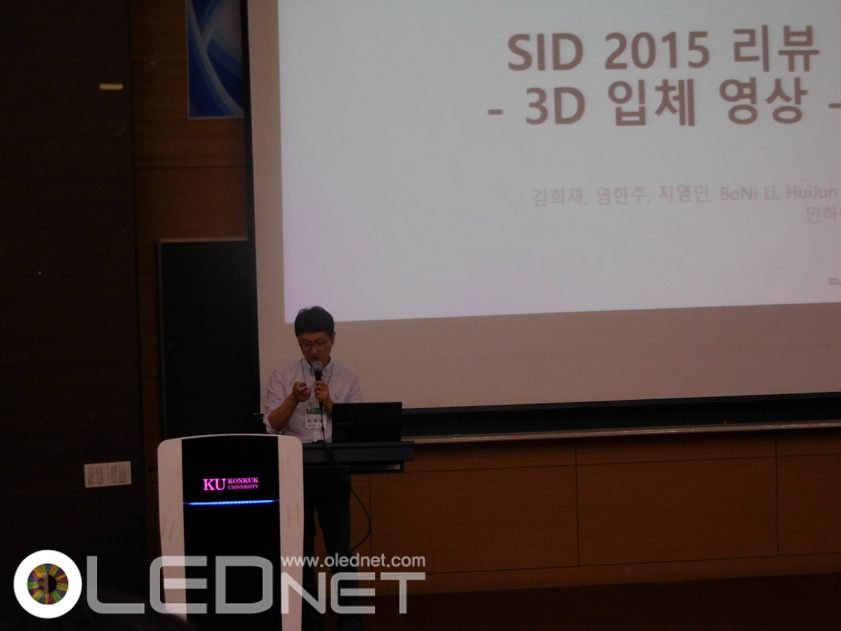
Inha University’s Associate Professor Jae-Hyeung Park at SID 2015 Review Workshop
HUD와 HMD, 가상현실을 만나 날아오르다.
/0 코멘트/카테고리: 기술, 디스플레이 /작성자: OLEDNET7월 31일 건국대학교에서 진행된 SID 2015 리뷰 워크샵에서 인하대학교 박재형 부교수는 SID 2015에서 HUD(Head Up Display)와 HMD(Head Mount Display)에 대한 관심이 증가했다고 발표하였다.
HUD는 단순히 외부를 보여주고 비바람을 막아주는 기존 앞 유리의 역할을 넘어서서 운전자에게 다양한 정보를 제공하는 기술을 의미한다. HUD의 도입으로 운전자들은 도로에서 눈을 떼지 않고도 차량과 목적지 정보를 파악할 수 있다. 이 때 단순한 디스플레이가 아니라 사용자의 동작을 인식하여 디스플레이에 반영한다는 것이 AR(증강현실) HUD이다.
일본의 Ricoh사는 SID 2015의 논문을 통해 차량이 자발적으로 조작에 개입하는 장치를 ADAS(Advanced Driving Assistance System)라고 명칭하면서 여기서 얻은 정보를 HUD에 반영하여 사용자의 인식과 판단을 도와줄 수 있다고 발표하였다. 이 때 명암비를 높여 디스플레이가 현실과 일치되어 중첩되게 하고 허상과의 거리가 5m 정도가 될 경우 더 향상된 AR을 구현할 수 있다고 발표하였다.
HMD는 머리에 착용하는 디스플레이 장치를 말하며 다른 디스플레이와 차별화되는 몰입감을 가지고 있다. 또한 넓은 시야각을 가지고 있기 때문에 현장감이 증대되어 엔터테이먼트용 디스플레이 장비로 많이 쓰였지만 최근 AR에 대한 관심이 높아지면서 AR용 디스플레이 기기로 각광받고 있다.
이번 SID 2015에서 Zwickau 응용과학 대학은 초점거리를 조절하여 상이 맺히는 거리를 사용자에 맞게 바꾸어 AR이 자연스럽게 구현되는 HMD 장치를 설계하였다. 중국 저장대학교 광학공학과에서는 3차원 공간상의 모든 점에서 모든 방향으로 빛이 얼마만큼의 세기를 가지는지를 표현하는 Light Field라는 개념을 사용하여 각각의 눈에 홀로그램의 보여주는 방식으로 향상된 AR을 구현하였다.
박재형 부교수는 “SID 2015를 기점으로 하여 AR과 연계된 HMD와 HUD에 대한 관심과 연구가 크게 증가할 것이며 앞으로 이런 경향이 지속될 것으로 보인다.”라고 설명하였다.
삼성전자는 헤드셋에 갤럭시 S6 또는 갤럭시 S6 엣지를 꽂아서 사용하는 HMD 기기인 ‘삼성기어 VR’을 출시하였다. Oculus VR와 Sony Computer Entertainment는 각각 OLED를 적용한 VR 헤드셋 제품인 ‘Oculus Rift’와 ‘Project Morpheus’의 시제품을 발표하고 내년 1분기(Oculus)와 상반기(SCE) 중에 소비자용 정식 버전을 출시할 예정이다. 에이치엘비는 HUD 최초로 ‘허상 거리구현방식’을 적용한 제품인 ‘AproVIEW S2’를 출시한 바 있다.

박재형 인하대 부교수, SID 2015 리뷰 워크샵

